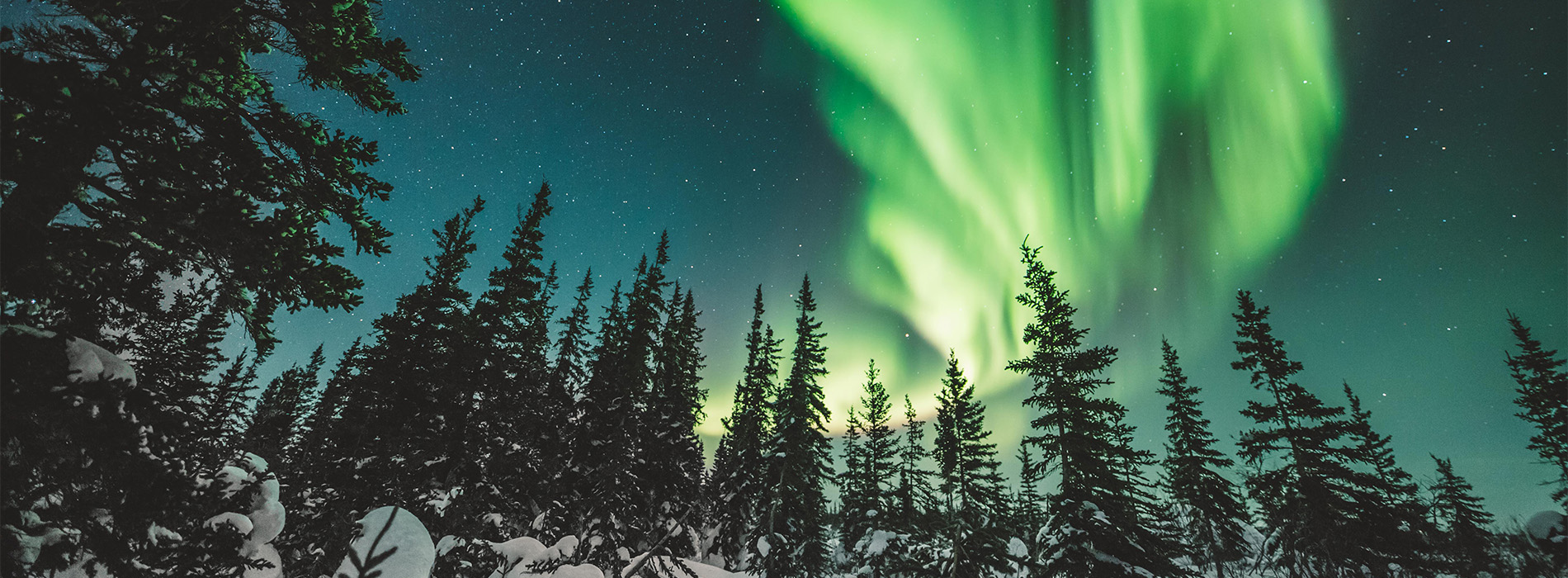Aurora borealis is more visible this year, adding another reason to visit Canada’s wild north. Adam Shaw explores the best places to view this natural wonder
Click here to download and save as a PDF
The northern lights have captivated travellers for centuries, and there are few better places to see this natural phenomenon than Canada, with its areas of vast wildnerness making for dark skies that are all the better for catching those dancing ribbons of colour. And now is a great time to book.
The sun follows an 11-year cycle, and in the middle it reaches a ‘solar maximum’, when it is at its most active. In turn, the displays of northern lights increase in intensity.
This is expected to peak between 2023 and 2026, and Nasa recently predicted this particular solar maximum to be even stronger than usual – so we can expect even more vibrant displays of green, red, pink and purple for the next three years in all destinations associated with the northern lights.
Although you can see the lights in many parts of Canada, they’re most commonly viewed in Yukon, the Northwest Territories, Manitoba and areas of Alberta, which are all geared for tourism. So here’s a guide to where and how to view the northern lights in the Great White North.
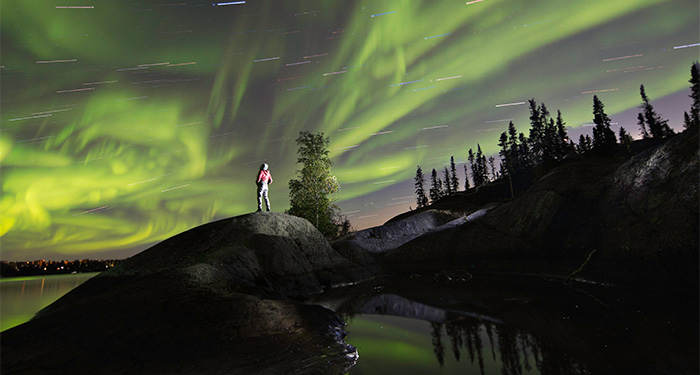
Northwest territories
Parts of this territory have up to 240 nights of visibility a year, meaning clients have a great chance of catching the northern lights. The capital Yellowknife is home to the Aurora Village, where guests can keep warm in one of 21 traditional tipis or on heated seats at dedicated viewpoints as they watch the lights glow over a frozen lake.
First Class Holidays offers trips to the site as part of its three-night Northern Lights of Aurora Village package, where guests are taken to and from the tipi village for hours-long skygazing sessions each night.
It can be booked from £932 per person with daily departures available from November to April and mid-August to mid-October. It includes accommodation in downtown Yellowknife and winter clothing rental, but not flights.
For those who’d prefer to stay at a resort to watch the northern lights, Blachford Lake Lodge offers cabin accommodation (complete with extra-large windows) alongside a host of night-time activities. These include an outdoor hot tub and wide decks for aurora viewings, igloo-building sessions and photography classes to help with capturing that perfect picture of the night sky.
There’s also the chance to request a northern lights wake-up service, which runs until 3am. First Class Holidays offers a nine-day Aurora Viewing & Adventure at Blachford Lake Lodge package from £3,699 per person, including flights, accommodation, internal transport and some meals, departing September 30.
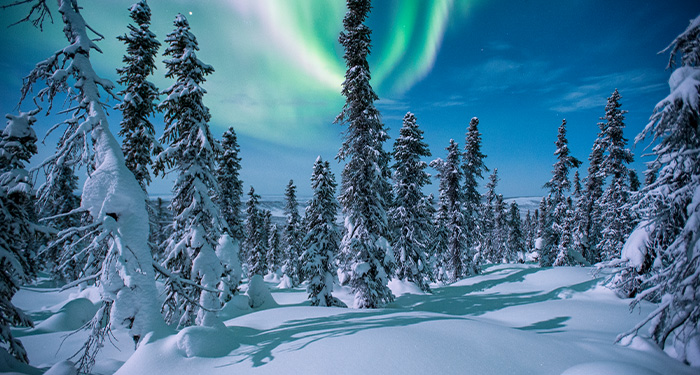
Yukon
Like the Northwest Territories, Yukon benefits from excellent visibility, which makes it another favoured place to spot the northern lights between mid-August and mid-April.
Clients can shelter from the infamous ‘Yukon cold’ (temperatures can drop below -40C) in large, heated tents just outside of Whitehorse during aurora-viewing sessions, offered as part of the Whitehorse & Dawson City tour from North American Travel Service, with hot drinks and snacks provided throughout.
The package combines a trip to Yukon’s capital with time in Dawson City, a former mining town around 300 miles away, where guests will be taken to a cosy homestead out in the wilderness for more viewings.
Guests will be taken to a cosy homestead out in the wilderness
They’ll also have a chance to hear from guides about the town’s Indigenous history. The tour can be booked from £2,475 per person based on two sharing for all departure dates in September, including flights from Heathrow, accommodation and car rental.
As visitors need a connecting flight to get from the UK to the Yukon, Canadian Affair offers a trip that combines northern lights spotting with a short stay in Vancouver to make the most of the stopover.
Once in Whitehorse, clients will be taken to a clearing each night where they’ll be able to sit by a roaring fire, toasting marshmallows and sipping on hot drinks. Or, if they’re feeling active, they can don snowshoes or ride a toboggan down a hill as the lights glow above them.
Prices for Canadian Affair’s six-night Northern Lights of the Yukon tour, with two nights in Vancouver and four nights northern lights viewing, start at £1,755 per person based on two adults sharing including all flights and accommodation, departing November 1.
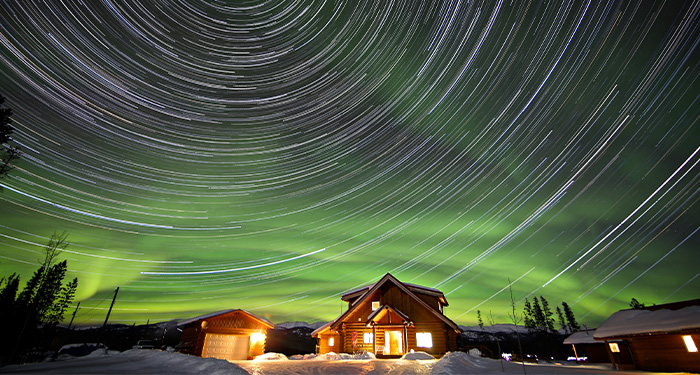
Manitoba
The waters of Hudson Bay and its surrounding tundra make Churchill, Manitoba, ‘the polar bear capital of the world’. With its high latitude and low levels of light pollution, it’s also a fantastic place to view the northern lights, which can be seen most of the year.
My Canada Trips combines these two experiences with its Polar Bears & Aurora Arctic Adventure trip. In the day, guests will fly high above the area’s rugged terrain in a helicopter, or ride across it in a specialist buggy, spotting wildlife such as polar bears, arctic foxes and arctic hares.
In the evenings they will be taken to wide, open plains for aurora viewing. A seven-night tour can be booked from £5,389 per person, including accommodation, round-trip flights between Winnipeg and Churchill and flights from London, departing September 3.
Skylights and panoramic windows enhance the experience
For a stay in the winter months, Discover North America’s Northern Lights & Winter Nights Enthusiast tour gives clients the opportunity to view the aurora near Churchill in a number of ways.
Across several evenings, there will be chances to spot the colourful patterns from a Tundra Buggy, at the heated Thanadelthur Lodge (which boasts an open observation deck) and over a bite to eat in Dan’s Diner, where skylights and panoramic windows enhance the experience.
The seven-night tour costs from £3,957 for a February 23, 2024, start date, including meals, accommodation and return flights between Winnipeg and Churchill, but not international flights.
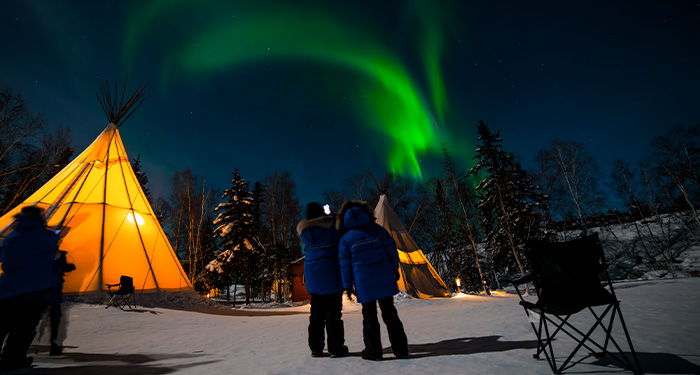
Alberta
While the Northwest Territories, Yukon and Manitoba are considered to be the ‘big three’ when it comes to witnessing the northern lights, it is also possible to find decent viewing opportunities in Alberta.
Clients can enjoy the national parks in Jasper and Banff, and the cosmopolitan hubs of Calgary and Edmonton, but to increase their chances of spotting the lights they’ll need to head north where the population is sparser and the skies are clearer.
Intrepid Travel offers an 11-day Canadian Rockies & Northern Lights itinerary, which visits the northwestern town of Peace River for aurora viewing sessions, where clients can make s’mores next to a bonfire.
Prices for a December 3 start date, which is in prime viewing season, begin at £3,805 per person based on two adults sharing, including B&B accommodation, some lunches and internal transport.
Flights from the UK are extra. Weather conditions are impossible to totally predict, meaning northern lights sightings are never guaranteed, but that sense of anticipation is all part of the fun and makes finally catching a glimpse of those brilliant bursts of colour all the more special.
Ask the expert

Stuart Rogers, product and commercial manager, Canadian Affair
“One of the great things about Canada is, given its latitude, you have a high chance of seeing the northern lights. And you really get that clarity – sometimes you’ll need a filter on your phone to capture the vivid colours, but in places like Yukon, you can see them with the naked eye.
It forms part of that overall experience of immersing yourself in the local culture. We call it soft adventure, where you capture the pioneer spirit that people must have felt hundreds of years ago.
There’s dog-sledding, snowshoeing and ice-fishing, then at night you can settle down with a hot chocolate to look up at the aurora. You can combine a trip with visits to other places – Takhini hot springs and Schwatka Lake aren’t far from Whitehorse – or spend time in places such as Vancouver, mixing a stay in a city with one out in nature.”
Need to know
❂ Timing is important. The best time to view the aurora in Canada is November to March, when the nights are longer. However, in northern parts of the country it’s possible to see them from mid-August to mid-April. 10pm to 3am is considered the ‘magic window’, and it’s advisable to avoid nights when the moon is brightest.
❂ Embrace technology. Apps such as My Aurora Forecast offer maps, weather stats and viewing predictions. Plus, you can set up alerts to go off when the chance of a sighting is greater.
❂ Photographing the lights requires prep. If possible, set your smartphone to ‘night mode’ and invest in a holder to steady it. With a more sophisticated camera, spare batteries are a must in the extreme cold.
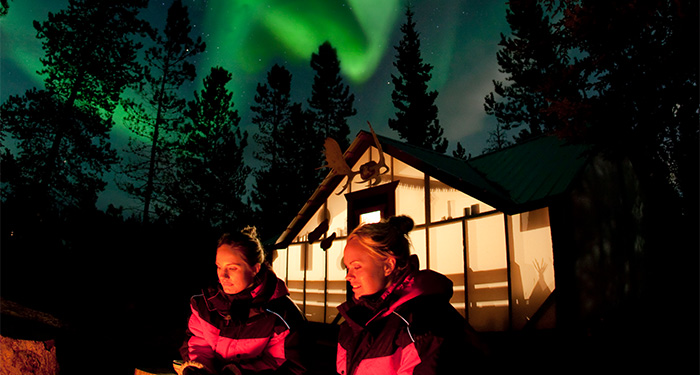
PICTURES: Travel Manitoba; Adam Pisani; James MacKenzie/NWT Tourism; Peter Mather; Wolfgang Bublitz; Anna McCarthy.
Read more
Ask the operator: Rail and sail
Whale watching, craft beer and ancient trails – an epic road trip along Canada’s Bay of Fundy
How to sell trips to Atlantic Canada – tips from the experts

